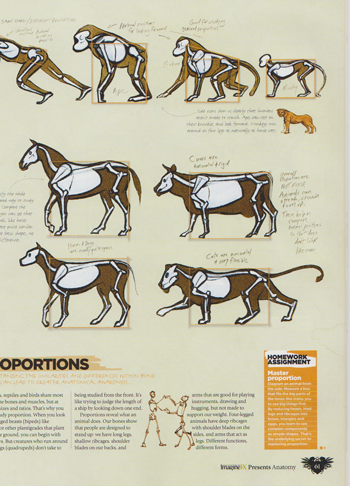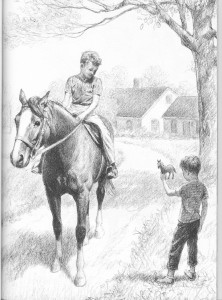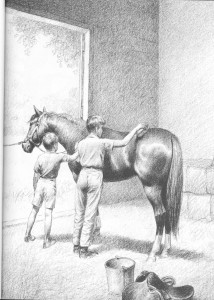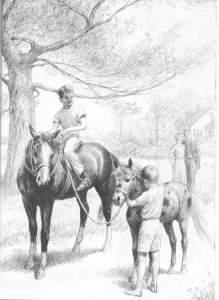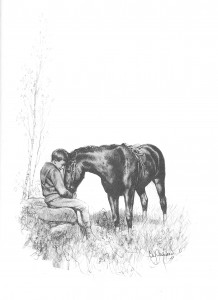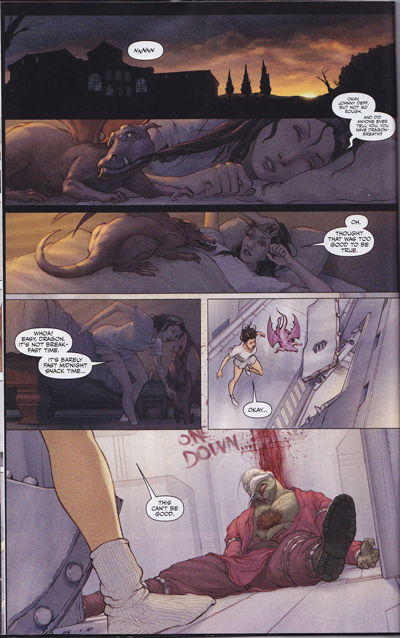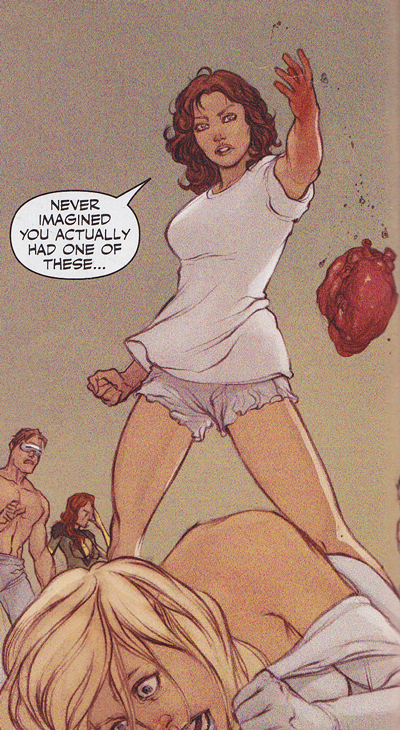I’ve been dipping my toes into new comic formats recently. A friend told me about Lost Girl, saying that the premise resembled some of the tropes of one of my old favorite books, War for the Oaks. War for the Oaks is an awesome early urban fantasy novel, and if you haven’t read it, I highly recommend it. Despite its aging cheesiness and eighties pop music references, it’s a fun tale of fairy and rock and roll.
Lost Girl comes in two formats. Mostly it’s a TV show. Secondarily it’s a stop motion interactive comic. It’s the comic part that I’ll be talking about. I’ve seen some stop motion comics before but nothing memorable. This was a much bigger budget production, with a clear script and real voice actors and sound effects and even cheesy choose your own adventure options.
Pity it sucked.
The premise is simple. Our heroine, Bo, is a succubus who fights crime. Good and Evil are both watching her. When feeling peckish, she kisses men in order to feed on their sexual desire. Such feeding sucks out their souls (or whatever) and they wind up dead, dried husks.
I found the comic unbelievably creepy, for all the wrong reasons. It’s clear to me, although it does not appear to be clear to the writers, that Bo is raping these men as well as killing them. She chooses innocents as well as muggers (yes, it’s an interactive comic, but I went for the nicest options available and she still ate a total innocent). The setting draws on the rape-fear tropes that plague society: pretty girl in tight clothes walking alone in a dark alley. Talk about cliche. She tells her victim to stop her if he doesn’t like it, she says it will hurt her more than it will hurt him, she says that once she starts she can’t stop. Blah blah blah rape tropes 101.
I suppose it could be argued that by making the rapist a woman, this is somehow turning a story-trope on its head. Except no, I think it does nothing more than increase the misogyny. Here we have a strong, kick-ass woman. And how does she get her power? By raping men. There is nothing good or strong or new about that. Nothing. She is supposed to be a gray character, but call me crazy, I consider rapists villains. Weird, I know. But there’s no need for a Good Guy and a Bad Guy to fight over which side she’s on. Stamp a E for Evil on her and move along, you know?
One of the oldest tropes in the book is that women gain power by using their sexual wiles to control or destroy men. See, for instance, Aristophanes or Euripides. It’s an insidious, nasty, icky approach to storytelling. Blech.
But besides that, Mrs Lincoln, how did you like the play?
Well, it sucks. The comic’s palette is absolutely dreadful. For reasons which are known only to marketing deities everywhere, there has been a new resurgence of sepia-toned mucky brown and gray color schemes. The new Sherlock Holmes movie is a good example. Practically the whole damn movie was brown, presumably to tell us that this is Ye Olde Tyme History. Nevermind the Victorian adoration for truly hideous bright colors. This lousy comic seems to have felt that by moving every normal color down and to the right in the Photoshop box, they’d have made the comic edgy and urban.
I find cities to be ridiculously bright. Much brighter than suburbs, where beige and tan predominate and brighter even than the countryside, where one finds greens and scarlets. Cities, in my humble experience, tend towards lots of shiny surfaces and gaudy clothing and banners and neon window displays and advertising and art and graffiti and bright metal newspaper boxes with free papers. The comic takes place during the rain, but oddly, there aren’t any silly umbrellas and no one is wearing the currently hot Hunter wellies in neon yellow.
Cities, in other words, are a lot more likely to be a jumbo pack of crayons dropped on a sidewalk than a country mud puddle. But hey, what do I know?
The drawings themselves are angular and psuedo-edgy. Not good, not dreadful, just…. dull.
Besides the victims, Bo talks briefly to a waitress. The authors of the comic show that the waitress is dumb but nice by making her fat, freckled, and bedecked in a pink diner uniform. Gee, I’ve never seen that before.
You know what I would like? Just once I would like a fat woman to be portrayed as both smart and sexually attractive, dammit. Not fat and therefore asexual. Not fat and therefore Despair. Not fat and therefore dumb. Fat and sexy and smart. Is that so much to ask? Apparently it is. (And yes, I may prefer my women a bit zaftig.)
Let us not even get started on how boring the composition was. The poor damn comic only lasted a couple minutes and I’ve already wasted over seven hundred freaking words on the thing.
No, instead I wish to present something else entirely. Because, see, at the point I watched Lost Girl the interactive comic, I began to think that motion comics just sucked as a medium. Books are books and movies are movies and really, just move on because the two can’t be combined without sucking the soul out of the work, succubus-Bo-like.
Then I stumbled across something else. A book trailer (worksafe):
Il etait une fois (Apologies for link instead of embedded video. WordPress isn’t letting me embed today.)
Benjamin Lacombe’s Il etait une fois.
It isn’t intended as a motion comic, but a book trailer, and yet it was far more effective to me than the comic above. It’s a simple story, just the rabbit entering the pages of the book, but I found it moving and fascinating and a lovely work in its own right.
The colors are much more carefully chosen. The rich red of the rabbit’s eyes are striking and the soft greens are dreamy. Each movement flows smoothly. The music adds instead of detracts. Overall there is a cohesive feeling of fairy-tale creepiness that the old, dangerous fairy tales had. Would-be-princesses might lose a toe here or there in their quest for the glass slipper, and monsters might just leap from those shadowy trees.
I found myself shivering in creepy delight, glad it was turning October, knowing that the nights are getting longer and the woods are getting darker.
The video is half as long, the story is twice as simple, and yet it has given me some glimmer of hope of what a moving comic might be. I hope to see more stories told this way someday.



